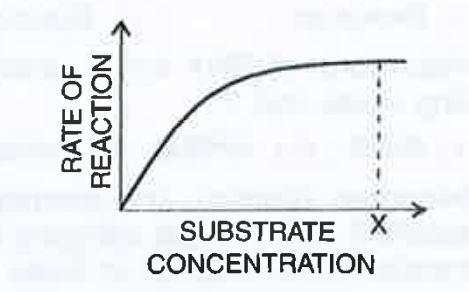Transferases catalysinig a transfer of hydrogen between a pair of substrate S and S'
Step-by-Step Solution:
1. Understanding Transferases:
- Transferases are a class of enzymes that catalyze the transfer of functional groups from one substrate (S) to another (S').
- The general reaction can be represented as:
S+G→S′+G′
- Here, G is the functional group being transferred, and S and S' are the substrates involved.
2. Identifying the Functional Group:
- The functional group (G) that is transferred can be any group other than hydrogen. This is a key point in understanding the role of transferases.
- For example, G could be a methyl group (-CH3), an amino group (-NH2), or any other substituent.
3. Clarifying the Misconception:
- The statement in the question suggests that transferases catalyze the transfer of hydrogen specifically between substrates S and S'. However, this is misleading.
- Transferases do not specifically transfer hydrogen; they transfer various functional groups, which can include but are not limited to hydrogen.
4. Conclusion:
- Therefore, the assertion that transferases catalyze a transfer of hydrogen between a pair of substrates (S and S') is false.
- The correct understanding is that transferases facilitate the transfer of a variety of functional groups, not limited to hydrogen.
Final Answer:
The statement that transferases catalyze a transfer of hydrogen between a pair of substrates (S and S') is false. Transferases are responsible for transferring various functional groups, and hydrogen is not the only group involved in their catalytic activity.
---
- Transferases are a class of enzymes that catalyze the transfer of functional groups from one substrate (S) to another (S').
- The general reaction can be represented as:
S+G→S′+G′
- Here, G is the functional group being transferred, and S and S' are the substrates involved.
- The functional group (G) that is transferred can be any group other than hydrogen. This is a key point in understanding the role of transferases.
- For example, G could be a methyl group (-CH3), an amino group (-NH2), or any other substituent.
- The statement in the question suggests that transferases catalyze the transfer of hydrogen specifically between substrates S and S'. However, this is misleading.
- Transferases do not specifically transfer hydrogen; they transfer various functional groups, which can include but are not limited to hydrogen.
- Therefore, the assertion that transferases catalyze a transfer of hydrogen between a pair of substrates (S and S') is false.
- The correct understanding is that transferases facilitate the transfer of a variety of functional groups, not limited to hydrogen.
The statement that transferases catalyze a transfer of hydrogen between a pair of substrates (S and S') is false. Transferases are responsible for transferring various functional groups, and hydrogen is not the only group involved in their catalytic activity.
Topper's Solved these Questions
Similar Questions
Knowledge Check
- Question 1 - Select One

Relationship between products (Q) and (S) is:APositional isomerBChain isomerCStereoisomerDFunctional isomer
Substrate and product are stable in any enzyme - catalysed reaction. The transitional states between the stable substrate and the product in the reaction are
View SolutionAssertion :- Base pairing between puring and pyrimidines allows uniform distance between two strands of the helix.
Reason : Number of hydrogen bonds between pairing bases are constant.View SolutionThe bonds between the enzyme and substrate must be
View SolutionA pair of enzymes which catalyse the transfer of groups
View SolutionWhat would be the effect on the rate of reaction between an inhibitor like arsenic and the substrate if substrate concentration is increased?
View SolutionThe given graph is showing the relationship between the rate of enzyme reaction and concentration of substrate. At concentration of substrate greater than X, the
 View Solution
View SolutionChoose the correct substrate - enzyme pair
View Solution
